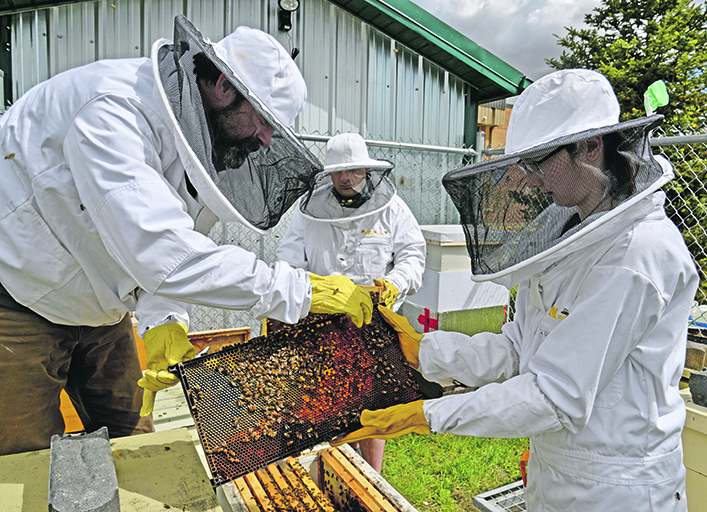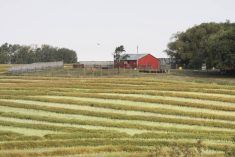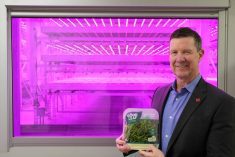A two-acre green space in Lacombe is home to the EcoVision Club, which has remained active despite the pandemic
LACOMBE, Alta. — COVID-19 has shuttered classrooms everywhere, but it hasn’t stopped the learning.
At Ècole Secondaire Lacombe Composite High School in central Alberta, a two-acre green space just outside the school’s west doors is abuzz with activity and experiential learning.
It’s home to ESLCHS’s EcoVision Club, which has provided student-led, agricultural-based programs since 2007. The club enables students to earn credits while learning to grow food and create local distribution channels.
ESLCHS was named Canada’s greenest school in 2018 and this year EcoVision was shortlisted for the Alberta Emerald Awards, which celebrate outstanding environmental achievements.
Within EcoVision’s green space at Lacombe are eight beehives, a bee hotel, six pollinator gardens, bird and bat houses, hundreds of fruit trees and shrubs, and dozens of raised garden beds. Pine, fir, and ornamental trees line the perimeter.
The dominant structure at the site is an 850 sq. foot energy efficient geodesic tropical greenhouse powered by four renewable energy systems.

EcoVision’s supervising teacher, Steven Schultz, who last year received the Prime Minister’s Award for Teaching Excellence, gave a tour of the silver dome where tomatoes, cucumbers, peppers, herbs, figs, avocado, pineapple, and two first-time flowering banana trees reach toward the 16-foot apex.
“What’s unique is that it’s a four season greenhouse and it’s almost net zero,” says Schultz.
The four renewable energy systems include geothermal heating and cooling, a 5,000 gallon heat distributing water tank, R5 rating passive thermal polycarbonate heat capturing panels, and solar electric panels.
Schultz mentioned other club initiatives: a six kW solar project, tower gardens, commercial aquaponics system raising tilapia fish for consumption, a composting system and a watershed improvement project.

“We generally work on a three-year cycle in which we do one large and one small project. The first year is research, the second planning, and the third year implementation.”
This September, the club expects to proceed with Roofs For Kids — the conversion of a used shipping container to an earthen roofed barn for small goats. The idea was first proposed by student Darcy Cunningham, who experienced goats grazing a living rooftop while on a family vacation.
“A side aspect of the goats will be an animal therapy program,” said Schultz. “We’re trying to provide hope for individuals that are in crisis.”
He said that the club has also recently partnered with Verge Permaculture, an Alberta-based company that provides accredited permaculture design courses that create healthier eco-systems and more sustainable homes.
“They’ve offered scholarships to the first four students that apply,” says Schultz.
Currently tending to the bees, gardens, and greenhouse are EcoVision Club members and their families. Also volunteering are Friends of the Greenhouse.
Dedicated FOG volunteer Janet Boyd is a former student of the school. In addition to assisting with a multitude of tasks at the site she shows teachers how to grow classroom tower gardens. Boyd aspires to have every school in Lacombe start gardening.

“EcoVision is an amazing project that is helping people to learn about food security and green energy,” she said. “The message they are sending is quite important.”
In early June, EcoVision Bee Wise volunteers Taylor Perez, 16, and Cunningham, 17, presented an introductory beekeeping course to community members.
“We had seven new beekeepers and one previous attendee,” said Schultz. “Two of the participants have already purchased their bees.”
EcoVision markets its products, including vegetables, honey, beeswax wraps, potted plants and Jun tea, through its online store and at the local farmers market. Customers include local restaurants. Fifteen percent of the micro-business sales goes to the Lacombe Food Bank with the balance reinvested back into club projects.

















